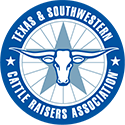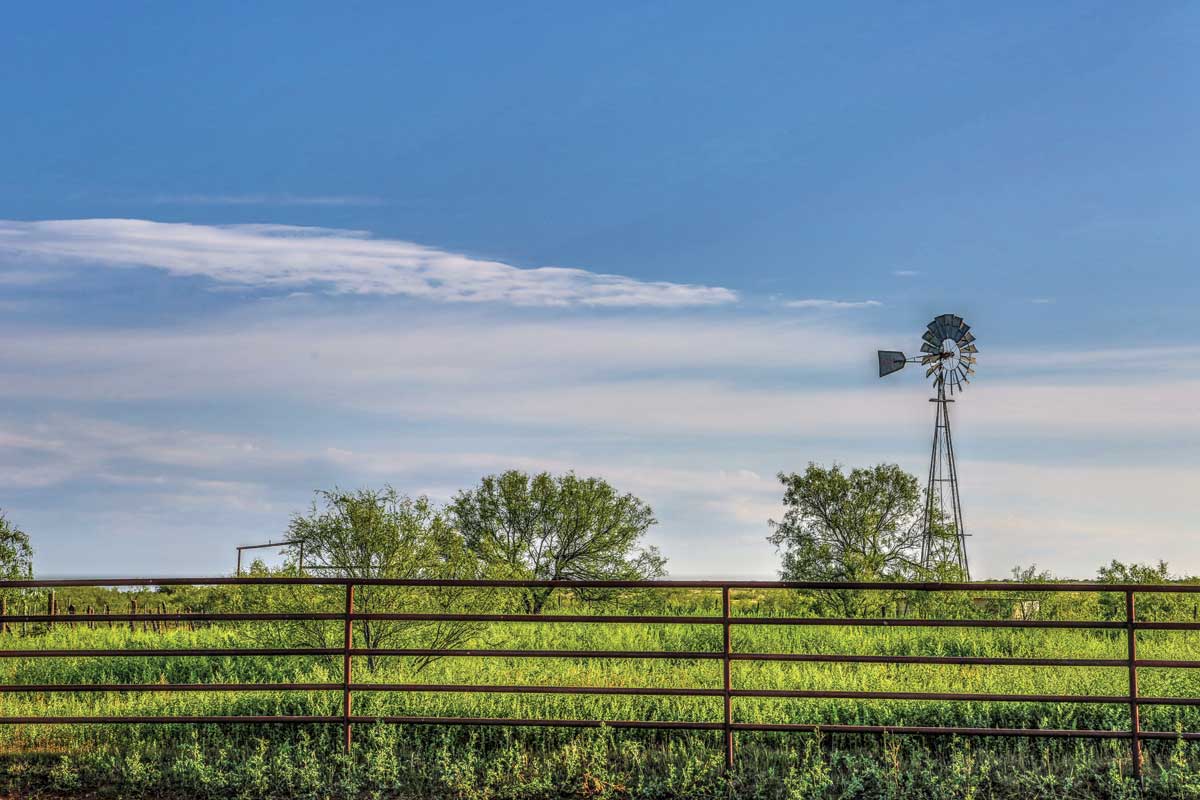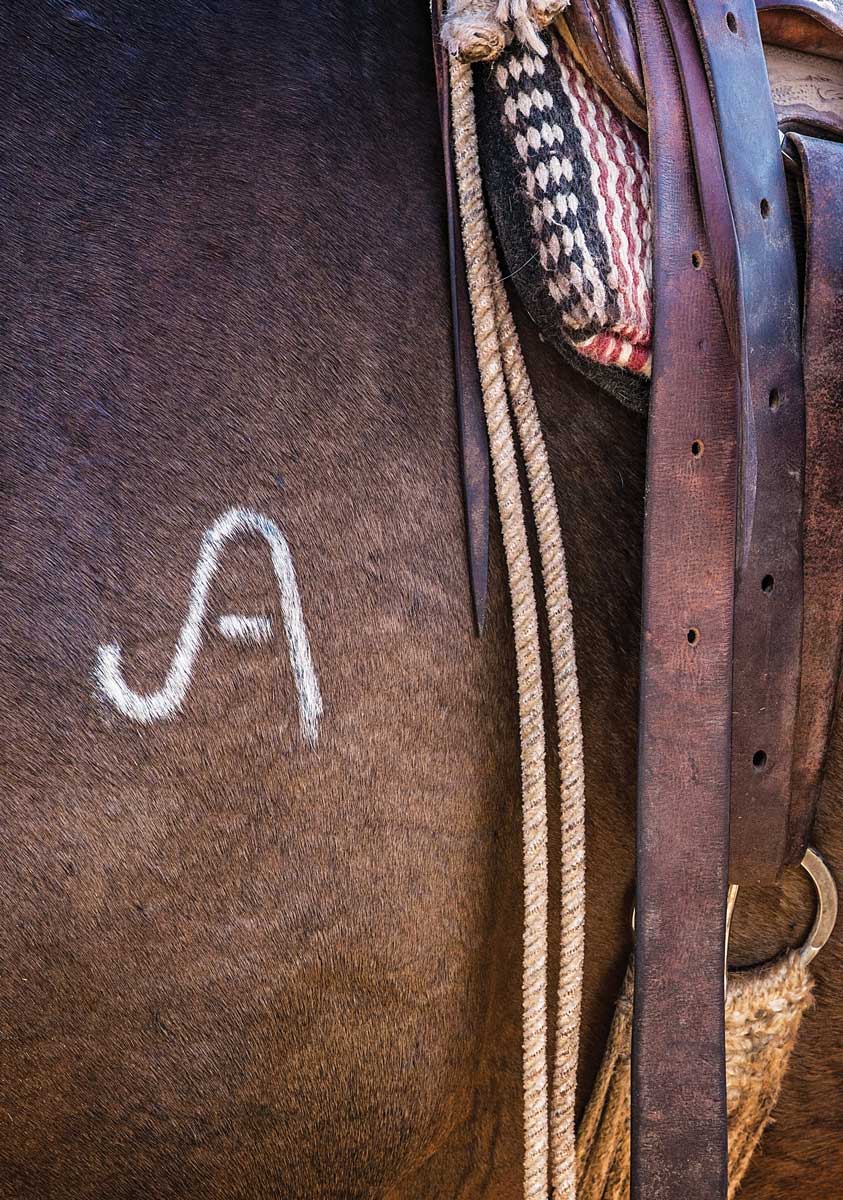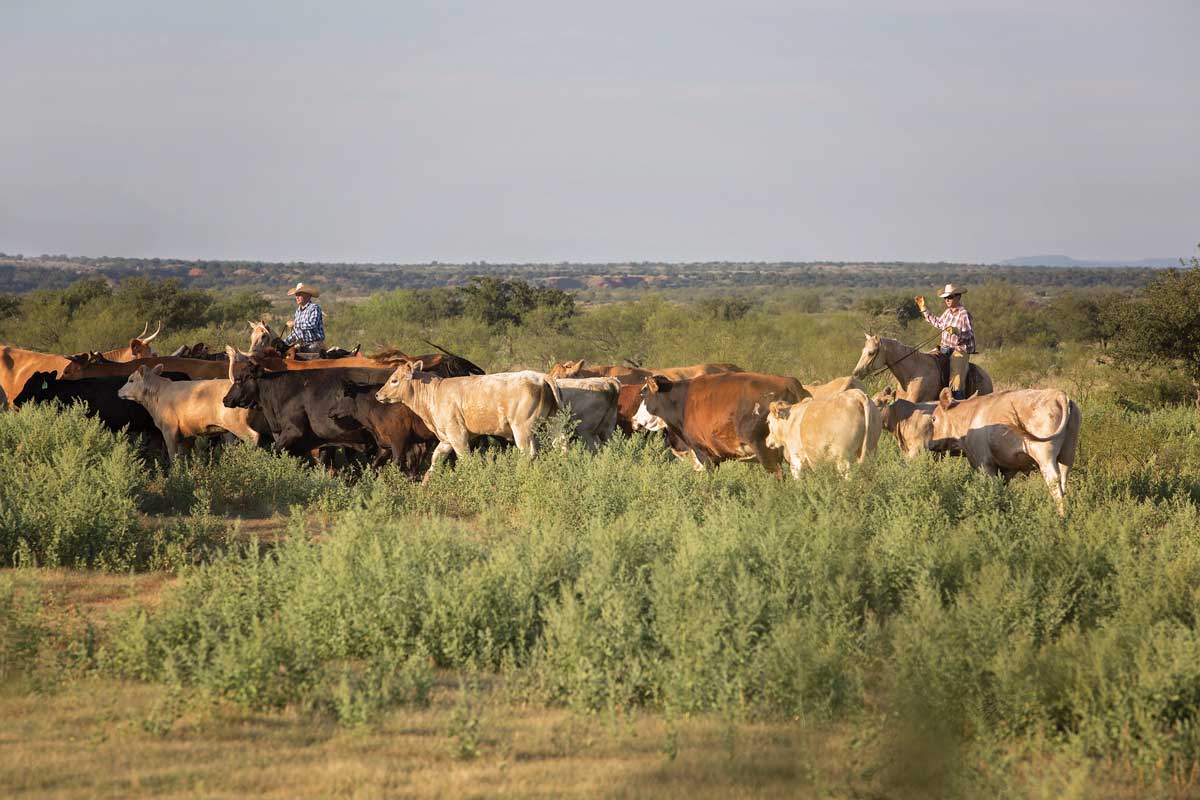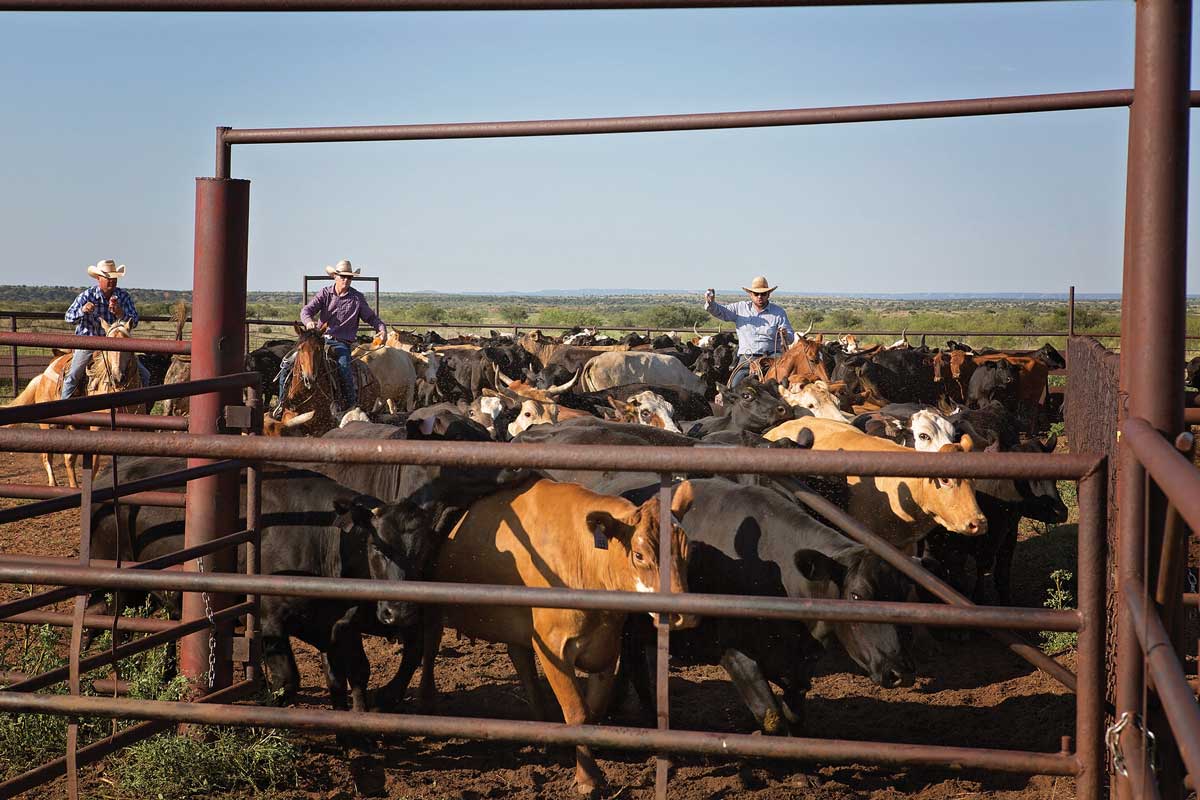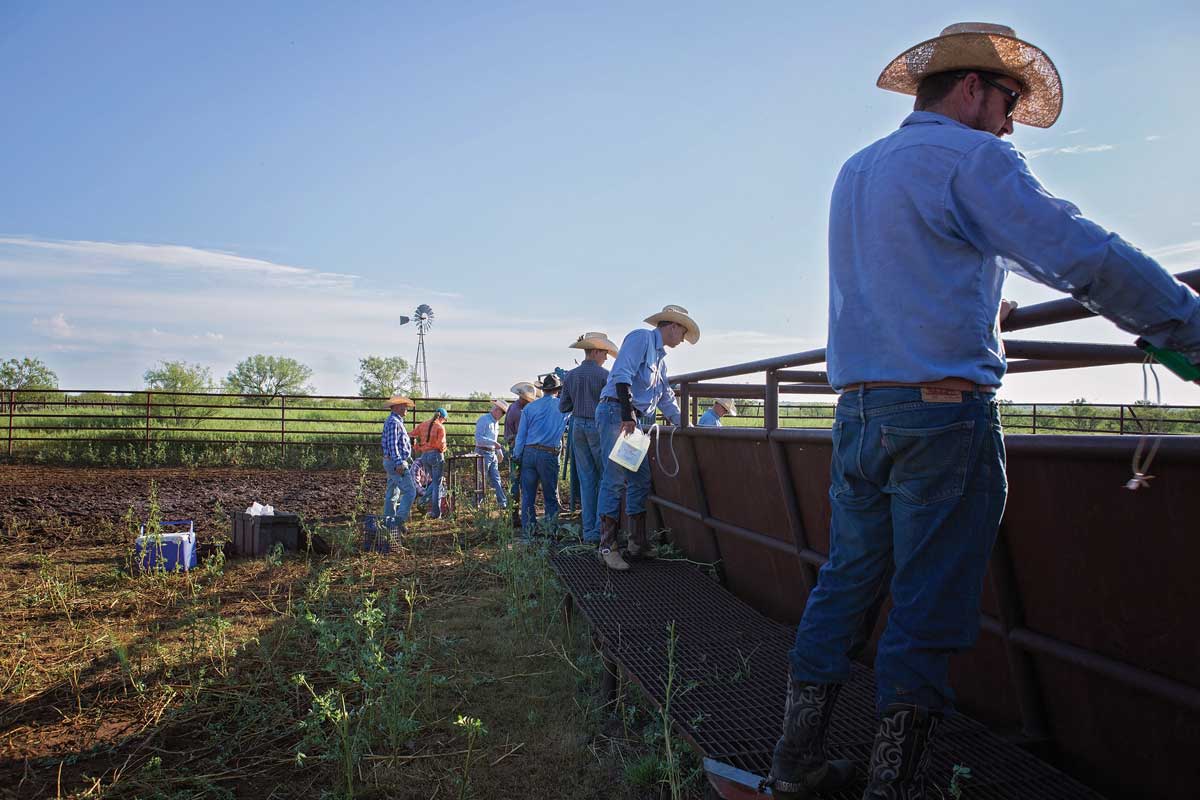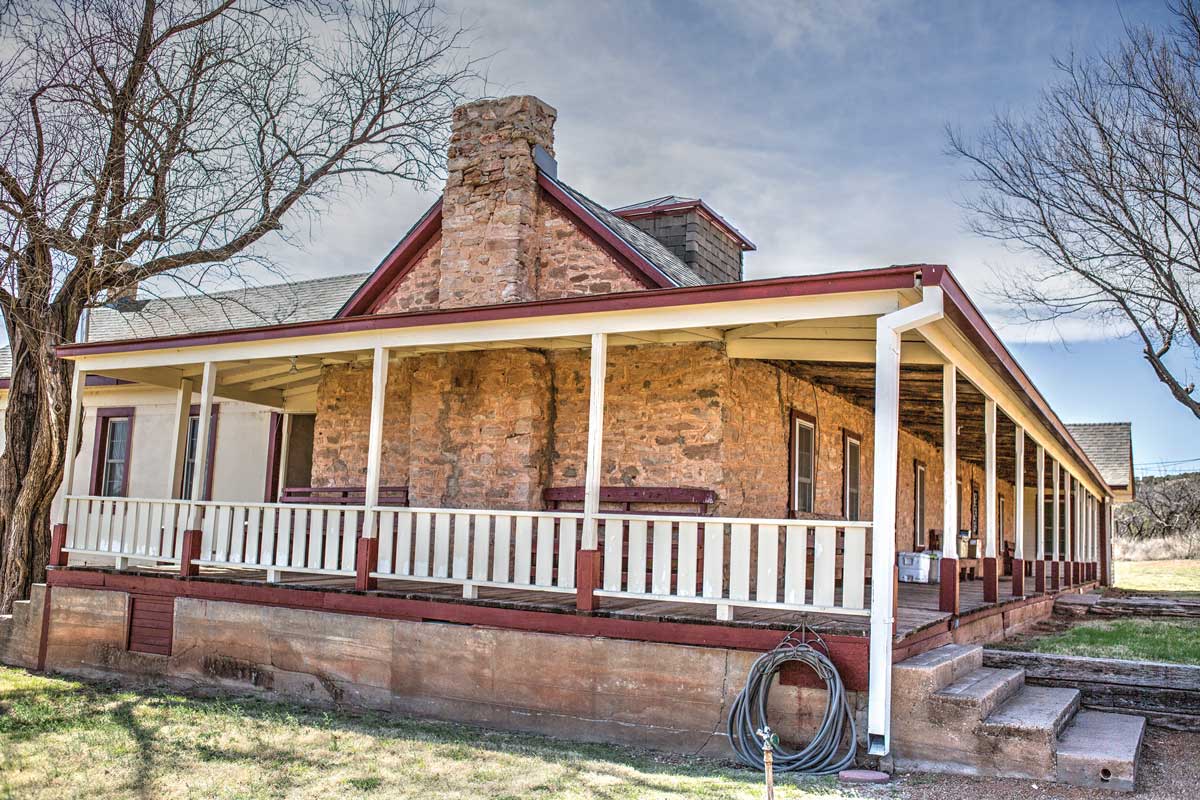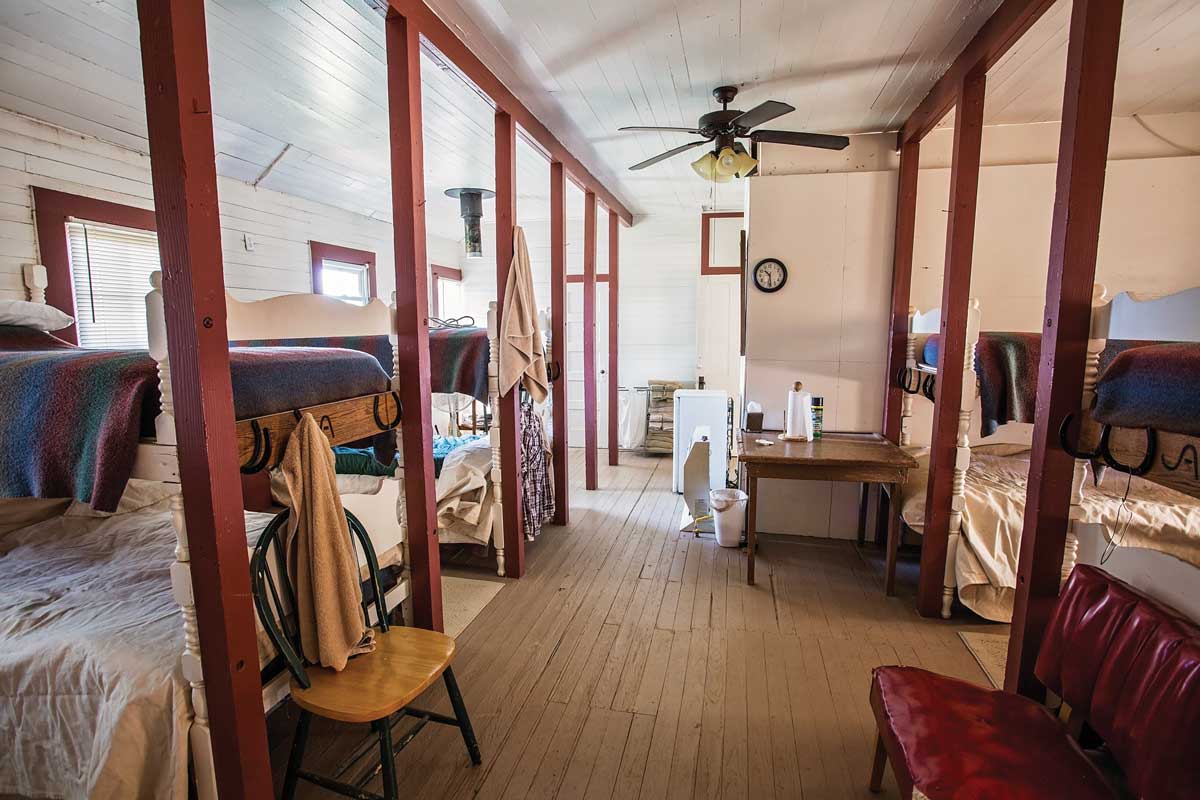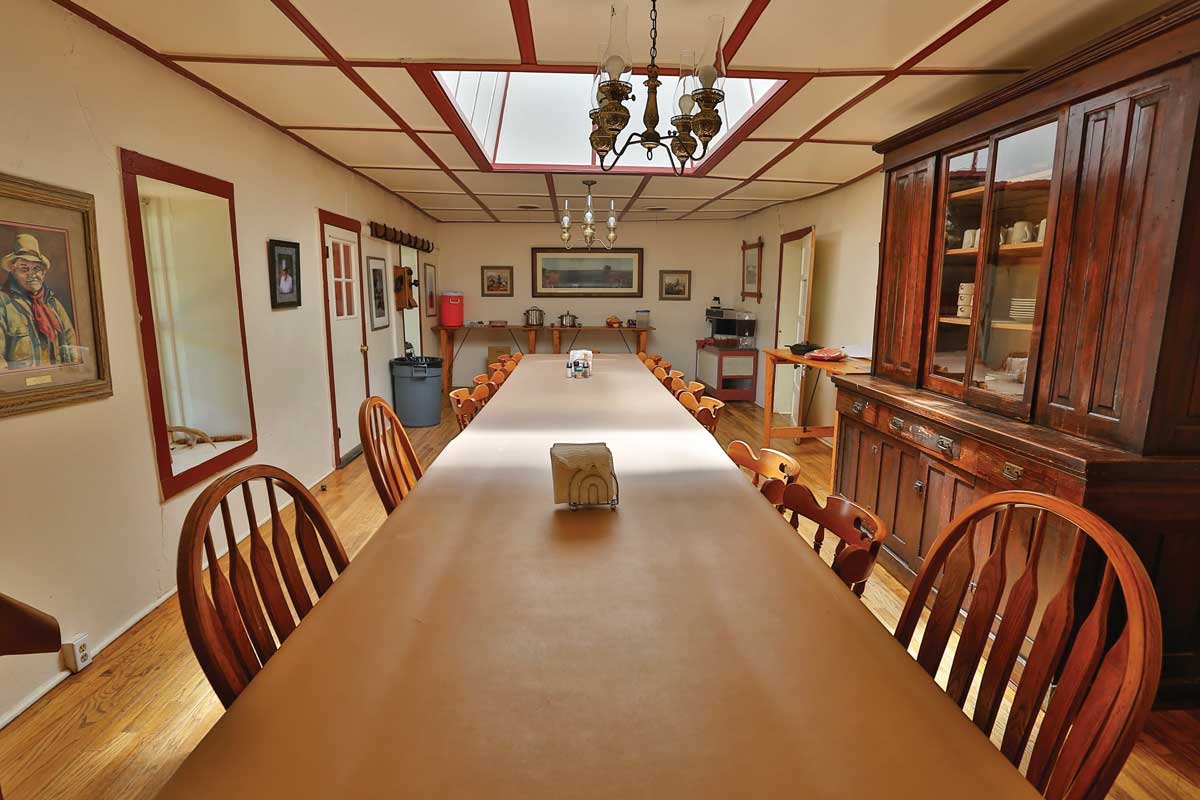A Progressive Legacy :: The JA Ranch
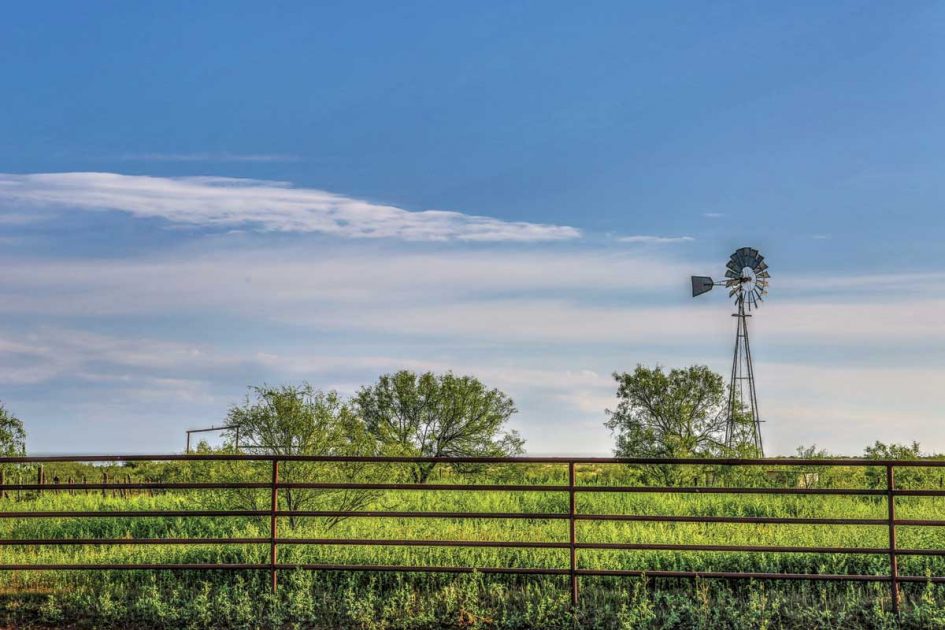
Story and photos by Carol Hutchison
It was on a Tuesday back in June, at 3:00 a.m., when I woke up in a hotel in Matador. By 4:00 a.m., Randal Gates, foreman of the JA Ranch, had texted me a GPS-marked location. “I hope this helps,” he typed.
The marked location was where I’d meet Gates and the other cowboys at 7:00 a.m. as they brought the cattle to the pens to be worked. “Thanks! I’ll see you then,” I typed and hit send. The day before, he’d given me directions that involved counting cattle guards, concrete bridges and cake bins. I wrote as fast as I could and prayed my scribblings were accurate.
After I got on the road, and after I passed through Clarendon and headed back toward the southwest, I started to get nervous. All I could see were red dirt roads going every which way, and some didn’t register on my map. I never knew it when I drove onto JA land, but Gates’ directions were spot on, and more reliable than my GPS. Soon the pens appeared right where he said they would be, surrounded by flatbed trucks and empty stock trailers. After about 30 minutes had passed, and after watching a few coyotes wander by, I began to hear cattle bawling in the distance. They emerged from the mesquite, at a pace as relaxed as the sunrise, cowboys on horseback behind and alongside them, a few riding a distance away to catch the turn backs.
Founded in 1876, the JA Ranch is the oldest ranch in the Texas Panhandle. The partnership of an unlikely pair, John Adair and Charles Goodnight, was the start of a cattle ranching legacy that would stand the test of time. The ranch operates solely on income from cattle, and it’s been under continuous ownership by the same family for 141 years.
After a few hours of photographing at the pens, I followed Ranch Manager Jay O’Brien to the JA Ranch headquarters. The ranch headquarters is seemingly found at a crossroads. Its presence, both beautiful and unassuming, is without signage or fancy entrances. The mess hall/bunkhouse faces the old ranch office and Palo Duro post office, both surrounded by homes and buildings and barns. Standing before these buildings felt surreal, as I’d only seen images of them in books.
Gates explained that the Palo Duro post office had been an operating U.S. Post Office and had served as the ranch office until 1992.
It’s now simply a place to drop off the mail.
Opening the old screen door and walking inside, it felt like stepping back in time. The corner sink to the immediate right is mounted below a buffalo head, with water splatter stains all over the walls. I could picture dusty cowboys walking over to wash up before conducting business and warming up by the oil stove in the middle of the room.
There is a small room off to the side with cubbyholes for sorting mail for those who live on the ranch, and a back room filled with historical items, like old typewriters and a huge radio for communicating on the ranch back in the ‘70s.
“We can use these, now,” Gates says, pulling out his cell phone.
Old maps and old photographs surrounded us as I envisioned the office full of old cowboys hoping to receive a letter from a loved one.
“Used to, the cowboys came in here twice a year; the fourth of July and Christmas. Other than that, they were out with the wagon the whole time. There was a blacksmith shop down here. Several more buildings that were here burned down or were torn down,” O’Brien explained.
In the old post office, I photographed the inside while Jay O’Brien caught up with email on his cell phone. Afterwards, I sat across from him at the old desk as he talked about the history and legacy of the JA Ranch.
“John Adair basically was what today would be called a venture capitalist. He made a lot of money in Ireland taking over estates that had gone broke in the potato famine, and then putting them back on sound footing and selling them. He did it by being the harshest and toughest son of a gun. He’d kick off families that had been there forever that weren’t productive,” O’Brien explained.
The story goes that John Adair married Cornelia Wadsworth Ritchie after her husband was killed in the Civil War. They met in 1867 at a ball given in honor of a U.S. congressman in New York City.
In 1874, the Adairs ventured to Colorado where they joined in a buffalo hunt guided by Charles Goodnight. In the evenings, Goodnight entertained the Adairs by the campfire with stories of Texas and the uniqueness of the Palo Duro Canyon and his dreams of establishing a cattle ranch there.
John and Cornelia Adair, along with Mr. and Mrs. Goodnight, rode to the Palo Duro Canyon in 1876. After they arrived, Adair and Goodnight formed the partnership for the JA Ranch. Charles Goodnight knew how to raise cattle, and Adair had the money to purchase the land. “Goodnight took one-third and Adair had two-thirds of the partnership. Goodnight was also paid a good salary for running it and Adair received interest on the capital,” O’Brien says. John Adair’s initials formed the branding iron, as it remains to this day.
“The ranch, truthfully, is the first ranch in the Panhandle. It’s been under continuous ownership all along, which is pretty incredible,” O’Brien says. John Adair died in 1885 and his wife spent the rest of her life very much involved in the ranch.
Goodnight and Adair contracted to partner on the ranch for 2 5-year terms. In 1887, after the partnership dissolved, Goodnight left the JA, taking 140,000 acres and 20,000 cattle with him as his share.
Mrs. Adair died in 1921 in England. Her son, Jack Ritchie, who worked on the ranch for years as a young man, had returned to England where he died only 3 years after his mother’s death. “The ranch was seriously in debt over a lot of money in state taxes. It was in the middle of the depression. Mrs. Adair loved the ranch, but in her will, it said that it would be sold to pay state taxes and pay her heirs,” O’Brien explains.
However, there was a young man who had heard stories about Texas and the JA Ranch all his life from his father, Jack Ritchie. As soon as Montie Ritchie completed his education in Europe, at age 21, he set out to see and experience the ranch for himself.
Montie arrived at the ranch in 1931. “He’d never been in the United States before, and he came out to the West on a train. You can just imagine coming off the Caprock in the midst of the dust bowl and during the Great Depression. It couldn’t have been a happy sight!” O’Brien said.
“Hobart, the manager at the time, tried to run Montie off. They put him out with the wagon and gave him the worst horses and the worst jobs. I knew Montie, but he never told me the stories. There was an old cowboy named Snooks Sparks who told me. They tried everything they could to make him hate the place,” O’Brien relates.
But nothing would turn Montie away from the ranch. At that time, the ranch was for sale and continued to operate in the red. “Montie went back to England and got proxies from the other heirs, legally defeating Hobart, and took the ranch off the market,” O’Brien says.
By 1935, Montie was running the JA. “Montie was Cornelia Adair’s grandson and he just took to it. He put the ranch back on a sound footing by being a savvy businessman. I have the utmost respect for him and what he did, considering how much trouble the ranch was in. It’s just incredible to me to think about an upper-class fellow from England coming here and how he brought the ranch back to life,” O’Brien says.
Across the road from the old post office, in the mess hall, dinner was being prepared. Chicken-fried steak, corn, mashed potatoes, and rolls made up the menu. Cowboys visited on the porch, waiting to be called in while the cooks worked in the kitchen. After our conversation, Jay O’Brien walked me over to the bunkhouse and showed me the old commissary underneath the bunkhouse.
Gates drove us over to the old school house. It stands alone out in the middle of a field. Even today, the ranch headquarters is so remote, that I imagine many years ago the necessity to build a school for the children growing up on the ranch was even greater. Gates told us that his kids’ school bus stop is 14 miles away on dirt roads. If the roads are muddy, it might take an hour and a half, one way.
On the JA’s 100th anniversary, Montie Ritchie attributed the JA’s success to “the wonderful, loyal men and women, leaders who worked for and with us, men of imagination, men of skill, men of courage, men who braved the elements day or night, men who took pride in their crafts, loved their horses and understood their cattle and were eager to enhance the reputation of the JA and proud to be a part.”
Montie Ritchie retired in 1992 and passed away in 1999. His only child, Cornelia “Ninia” Wadsworth Ritchie, who was raised on the JA, and her son, Andrew Bivins, continue the legacy today. They participate in the management of the ranch, working daily alongside the men and women who help care for the ranch.
“If you look at the management of the ranch, in general, it was always open to change; whether it be Goodnight bringing in the different breeds other than Longhorns to upgrade during the first 10 years, or Montie Ritchie, who was always open to progress and change. That’s all part of why the ranch survived,” explains O’Brien. Still, I wonder what John Adair and Charles Goodnight would think about the ability to electronically send the location of a set of pens today and to click a button for supplies to be shipped to the ranch.
So often, the JA Ranch conjures thoughts of the Old West, dugouts, and bygone days of cowboys out with the wagon. I witnessed both — parts of the old west and the necessity and convenience of technology. It seems that the old and the new can indeed co-exist and that mixture can even nurture a lasting legacy.
“A Progressive Legacy” is excerpted from the December 2017 issue of The Cattleman magazine. Join today to start your subscription.
